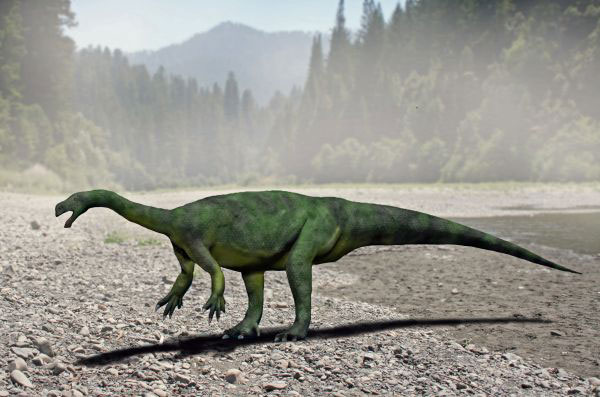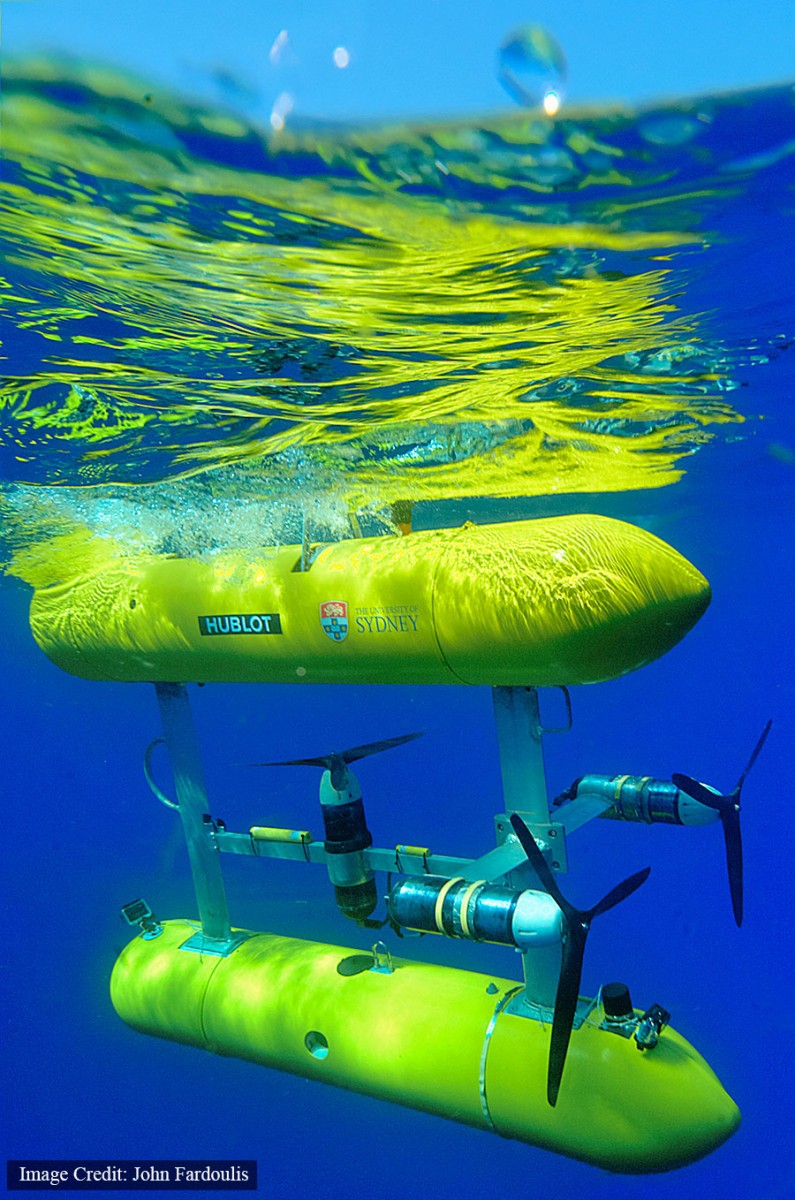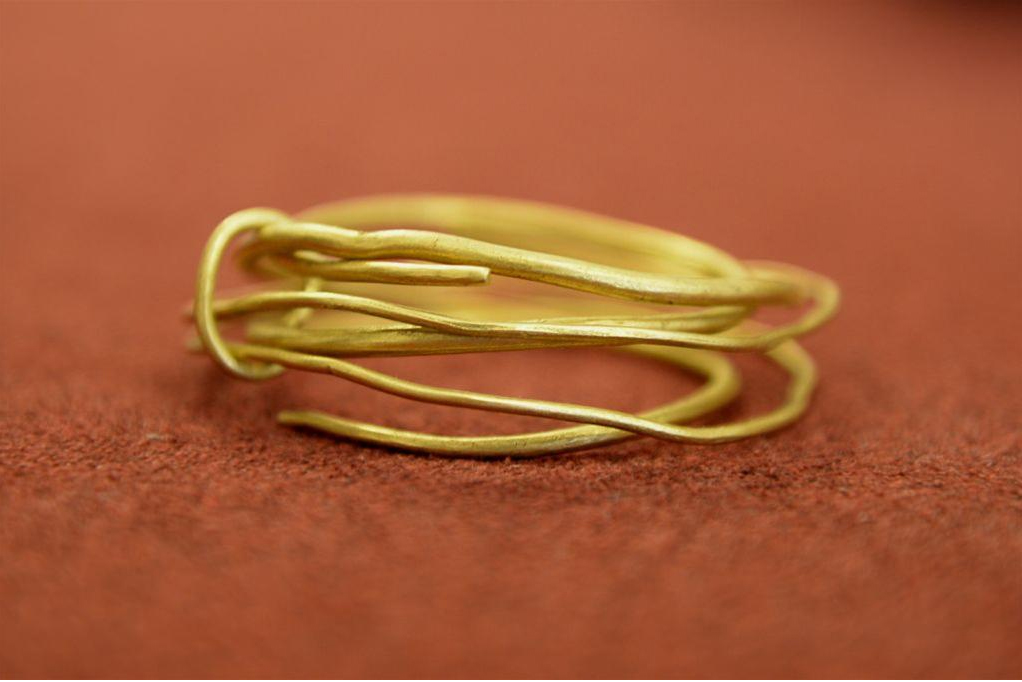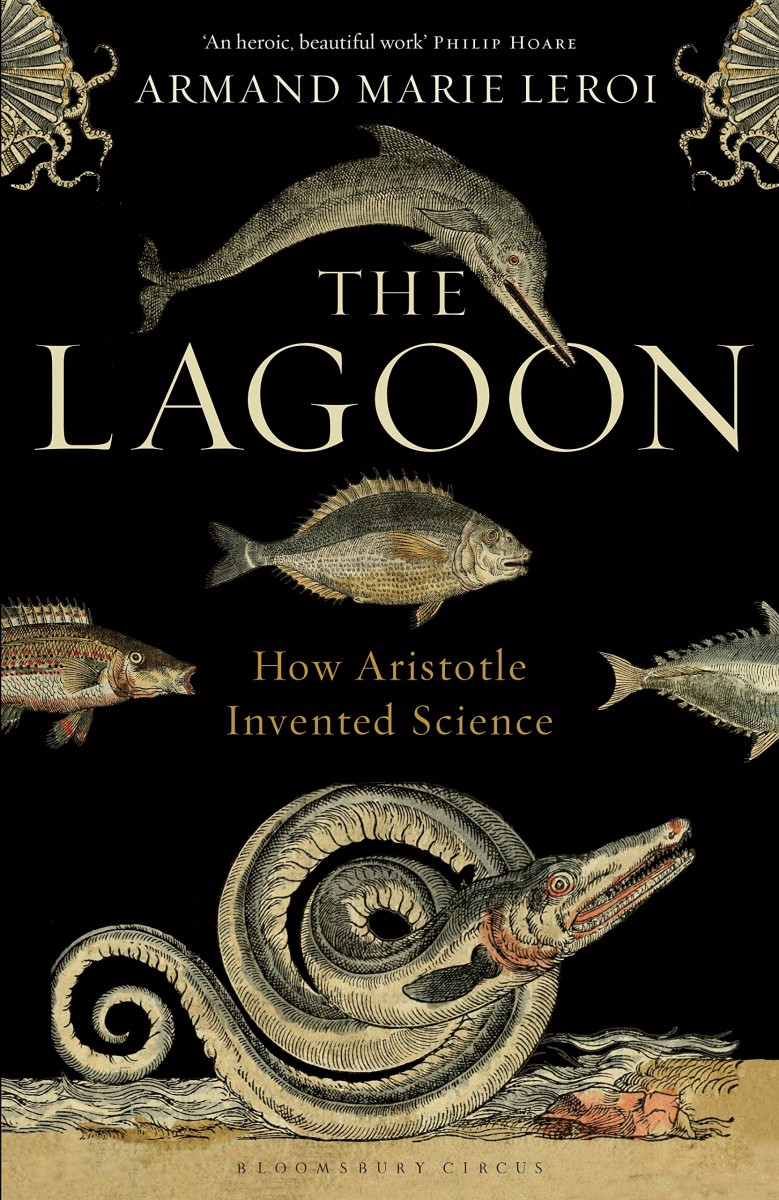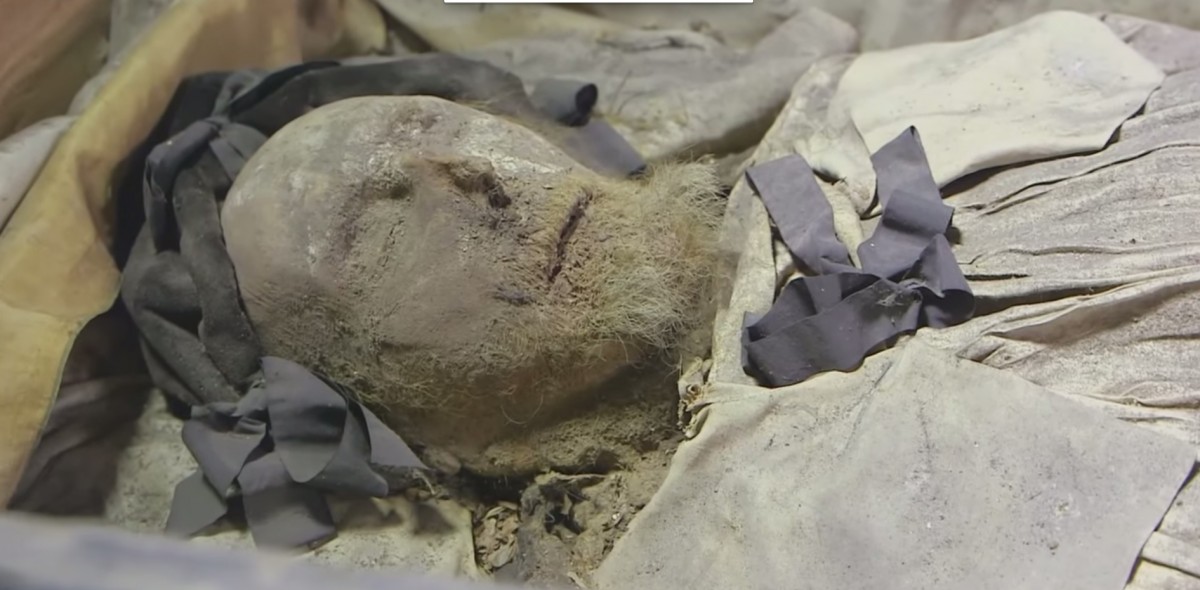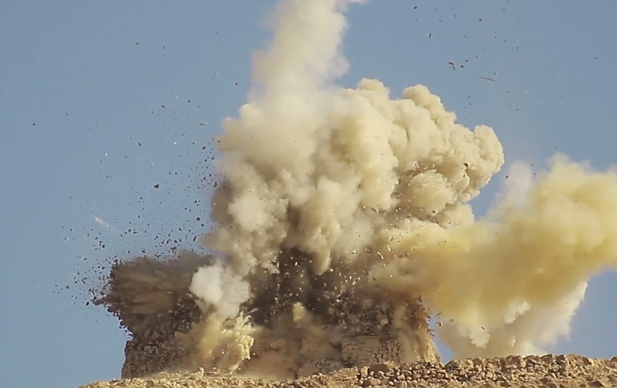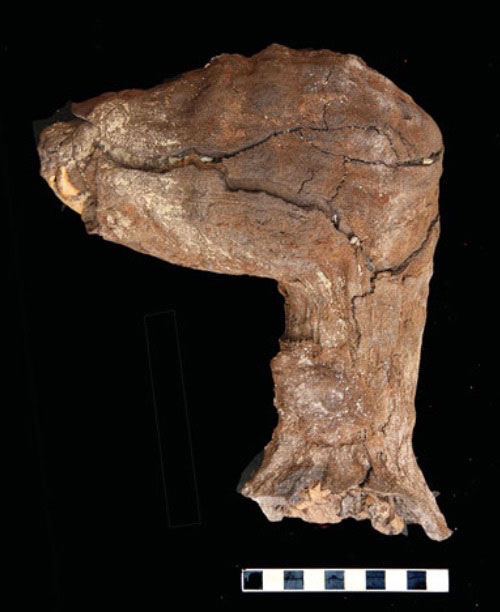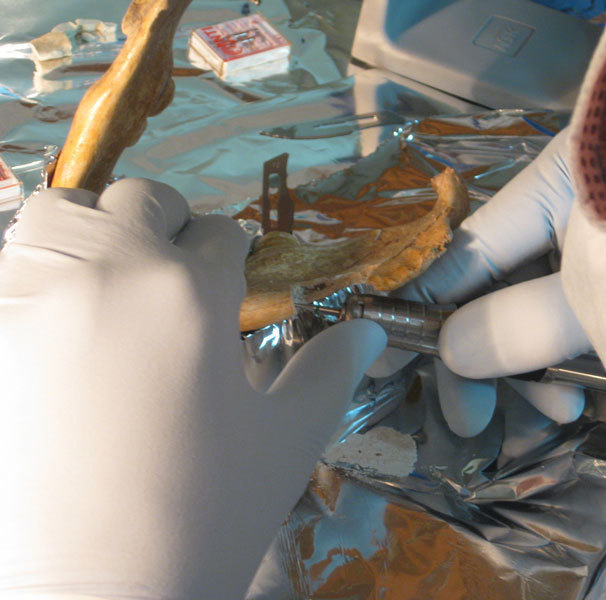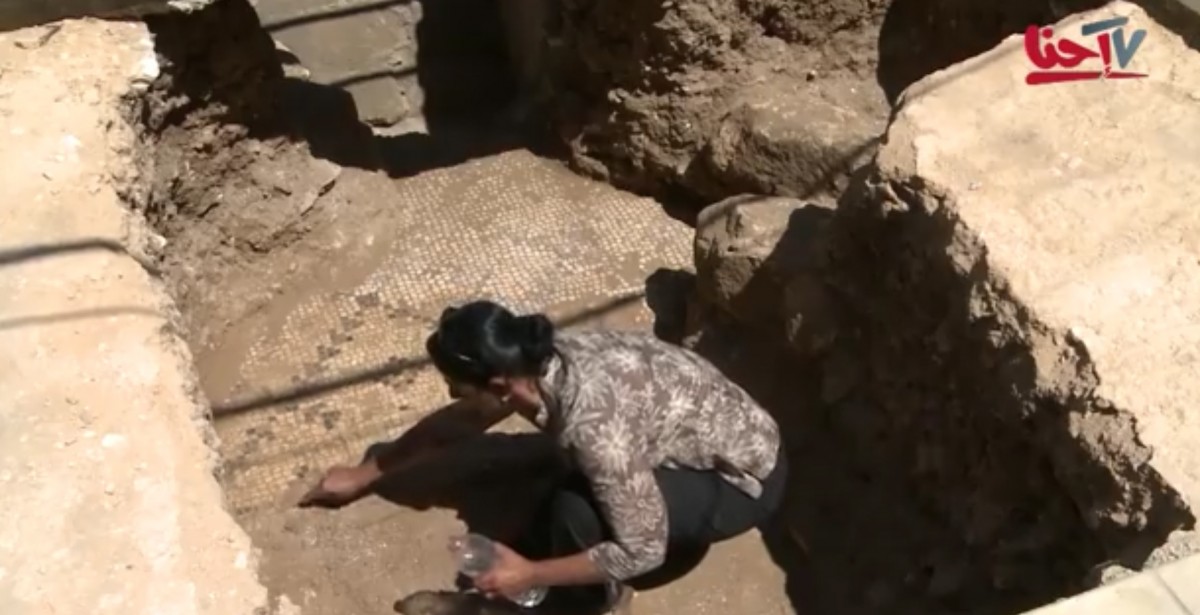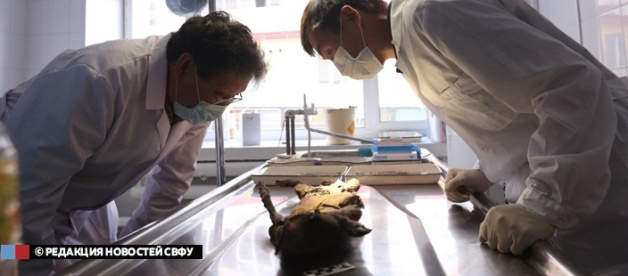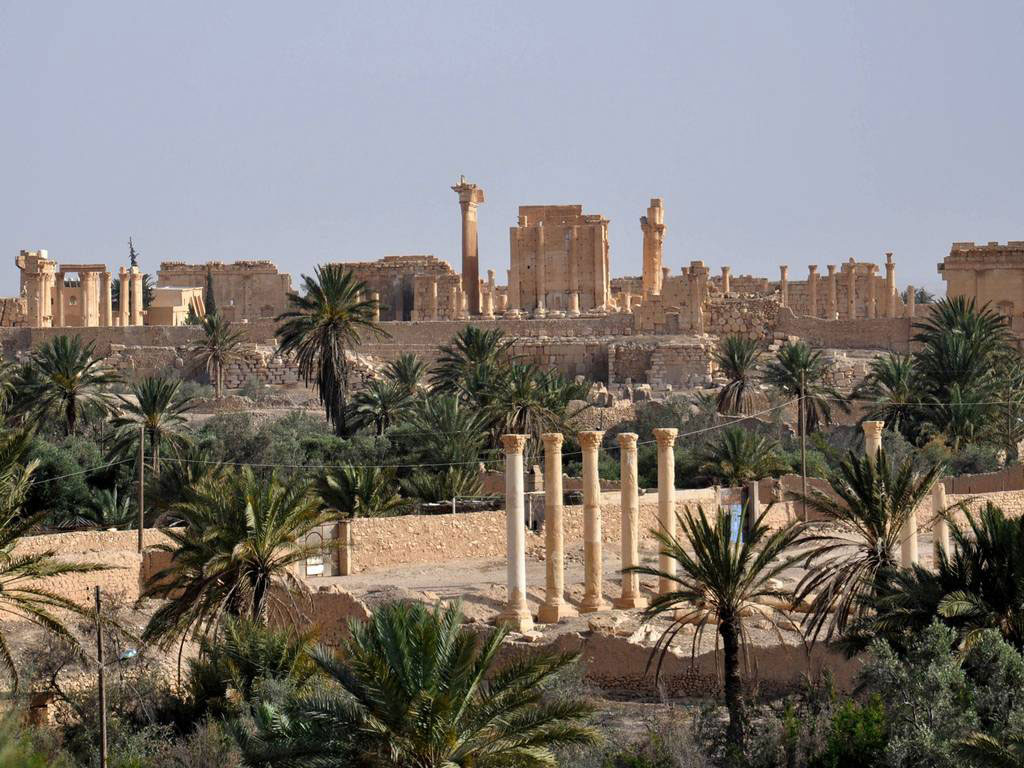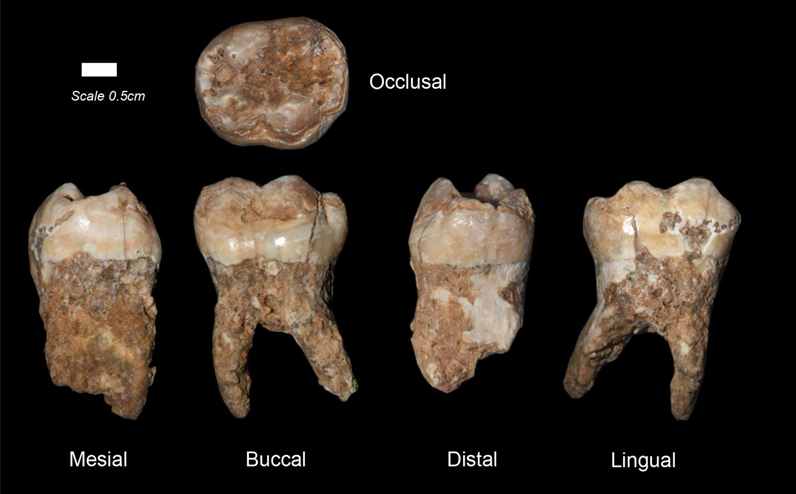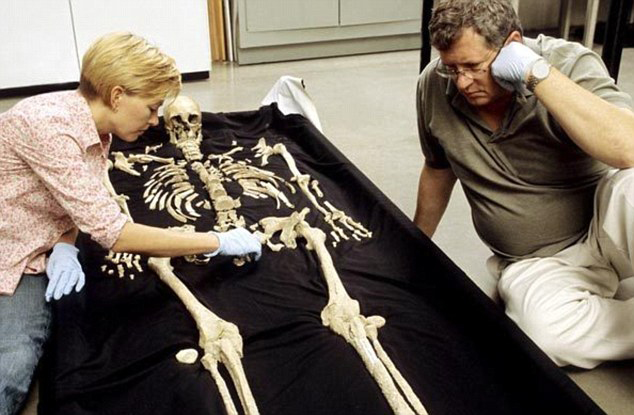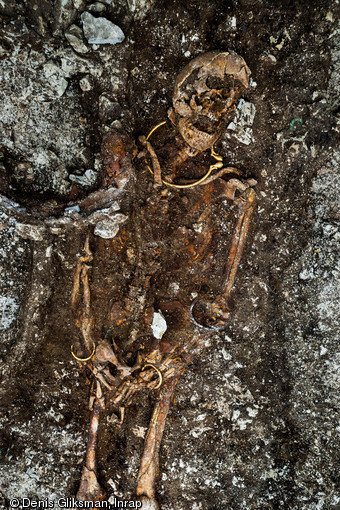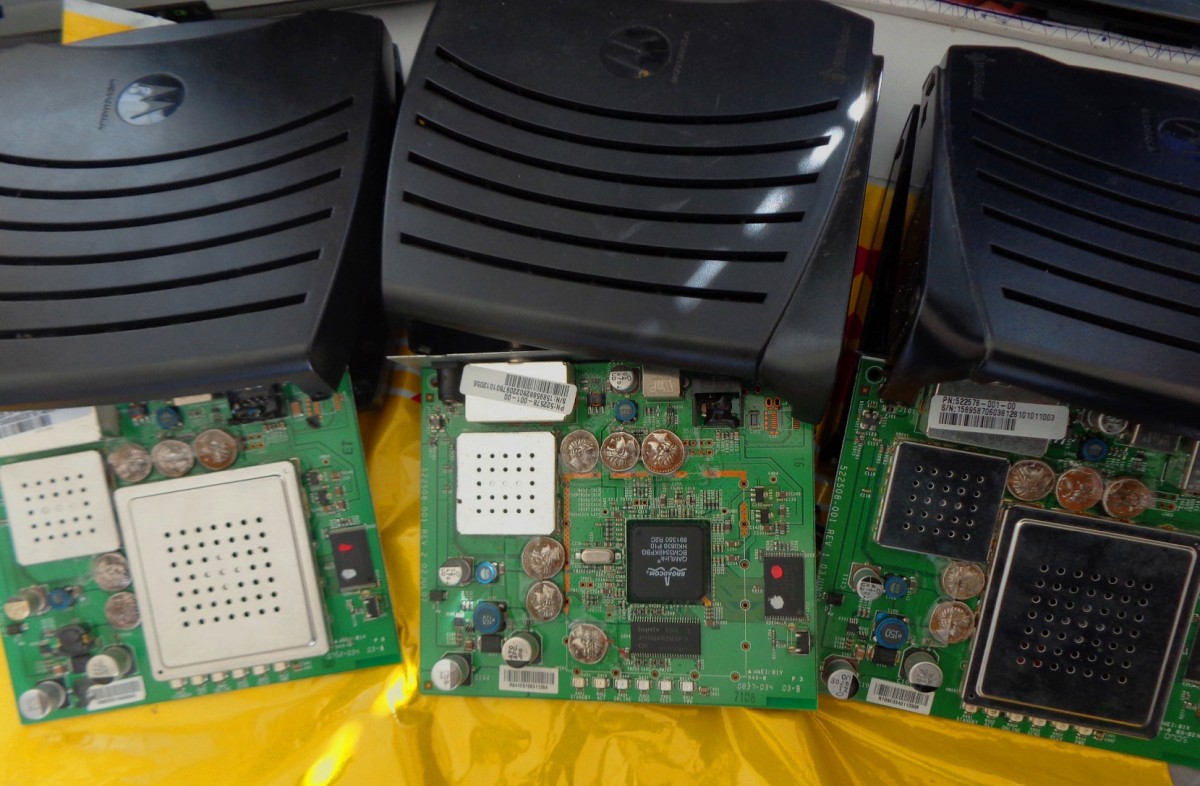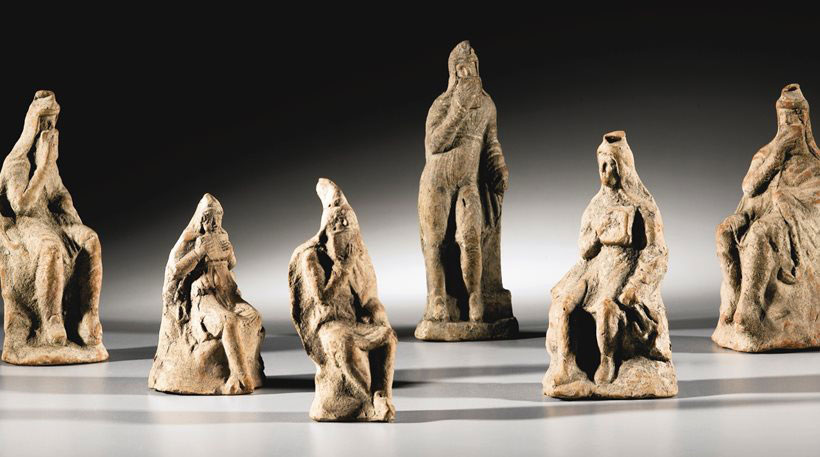New Sesotho-named dinosaur from South Africa
South African and Argentinian palaeontologists have discovered a new 200 million year old dinosaur from South Africa, and named it Sefapanosaurus, from the Sesotho word "sefapano".
Traces of second wreck located at Antikythera
The shipwreck that carried the Antikythera Mechanism might have been accompanied by a second ship, as signs from the ongoing research indicate.
Farmer finds 2,500-year-old gold bracelets
Gold items preliminarily dated to 1600-400 BC have been discovered by a farmer near Jasło in the Subcarpathia. The antique objects have been taken to the Sub-Carpathian Museum in Krosno.
Runciman Award to Leroi’s “The Lagoon”
Armand M. Leroi’s The Lagoon: How Aristotle Invented Science (Bloomsbury Publishing) is this year’s winner of the Runciman Award for books published in 2014.
Mummified bishop: A unique time capsule from the 17th century
The mummified remains of Peder Winstrup are one of the best-preserved human bodies from the 1600s. Preliminary investigations reveal a sensational find: the internal organs are still in place.
Isis blows up Palmyra shrines in Syria
ISIS militants have blown up two ancient tombs they consider sacrilegious in Palmyra, a 2,000-year-old UNESCO World Heritage site in central Syria.
New survey at dog catacomb in Egypt
Researchers have conducted a new survey at the dog catacomb near the temple of Anubis at Saqqara, with significant new finds.
Gold sun disc from the time of Stonehenge revealed to the public
An early Bronze Age sun-disc from Monkton Farleigh in Wiltshire has gone on display for the first time.
An early European had a close Neandertal ancestor
Genetic analysis of a 40,000-year-old jawbone from Romania reveals that early modern humans interbred with Neandertals when they first came to Europe.
Early Christian mosaic floor revealed in Nazareth
A mosaic floor that appears to be from one of the earliest churches in the history of Christianity was uncovered recently in Nazareth, Israel, at the Church of the Annunciation (Greek Orthodox).
12,000-year-old dog preserved in Siberian ice
The remains of a three-month-old female dog thought to have died during a landslide near the Syallakh River some 12,450 years ago have been autopsied by researchers of the North-Eastern Federal University in Yakutsk (Russia).
IS lay mines around Palmyra ruins
IS militants have planted mines and bombs in the Palmyra site on Saturday. The Syrian Observatory for Human Rights stated that it is not quite clear if the explosives were planted to destroy the site or to deter opposing forces from advancing.
Ancient dental plaque reveals insights in Middle Pleistocene daily life
A new research provides direct evidence of what early Palaeolithic people ate and the quality of the air they breathed inside Qesem Cave.
Kennewick Man: Solving a scientific controversy
An 8,500-year-old skeleton has been the focus of a bitter dispute between Native Americans and American scientists - new study based on his genome sequence shows that KM is more closely related to modern Native Americans, than to any other population.
Laid to rest with a gold torque
INRAP archaeologists excavating the aristocratic tomb of Lavau dated it to the beginning of the 5th century BC. The tomb contains exceptional grave goods.
Bulgarian officials stop trafficking of hoard at Sofia airport
A hoard of 82 coins has been found in Bulgaria just as it was about to be smuggled out of the country. The coins had been hidden inside three routers, taped to their circuit boards, which were to be sent to the United States via courier.
How ancient Romans lifted wild animals into the Colosseum
An elaborate system of elevators and trap doors lifted ferocious beasts onto the Colosseum floor.
Sotheby’s selling Amphipolis figures challenged
Auction house Sotheby's has sold six clay figurines claiming they come from Amphipolis.
Samothrace: The Mysteries of the Great Gods
"Samothrace: The Mysteries of the Great Gods" opens on Saturday, June 20, in the Acropolis Museum of Athens.
Excavation Begins at England’s Marden Henge
Our knowledge of the people who worshipped at Stonehenge and worked on its construction is set to be transformed through a new project led by the University of Reading.
Tool use is ‘innate’ in chimpanzees
First evidence for a species difference in the innate predisposition for tool use in our closest evolutionary cousins could provide insight into how humans became the ultimate tool-using ape.
Ancient Egyptian statue sale stopped in Germany
A 2,700 year-old Egyptian statue which was to be put for sale in Germany has been recognized as stolen from the storerooms of the Antiquities Ministry and will be soon returned to Egypt.
Regional stories towards a new perception of the early Greek world
From 18 to 21 June 2015 at the Saratsi Amphitheatre in Volos, an international symposium entitled “Regional stories towards a new perception of the early Greek world” is organised.
Rare Inscription from the Time of King David was Discovered in the Valley of Elah
A rare inscription with the name Eshbaʽal was discovered at Khirbet Qeiyafain the Valley of Elah. It dates back to the time of King David.
